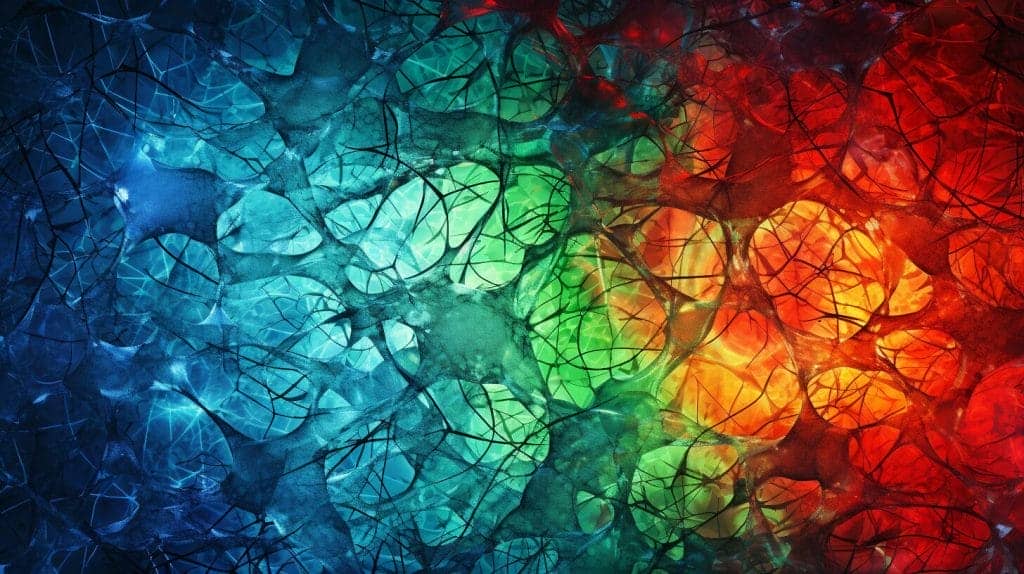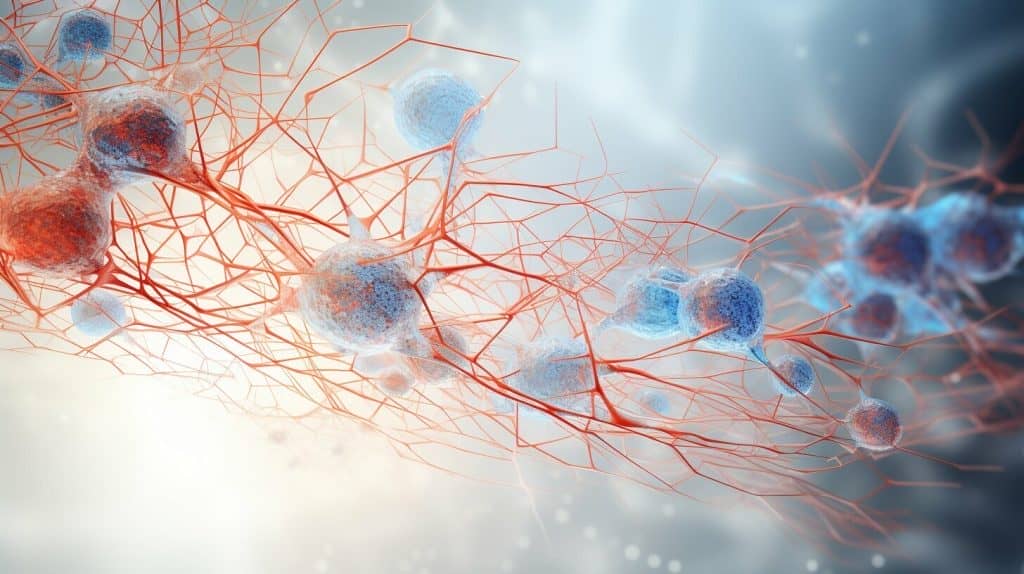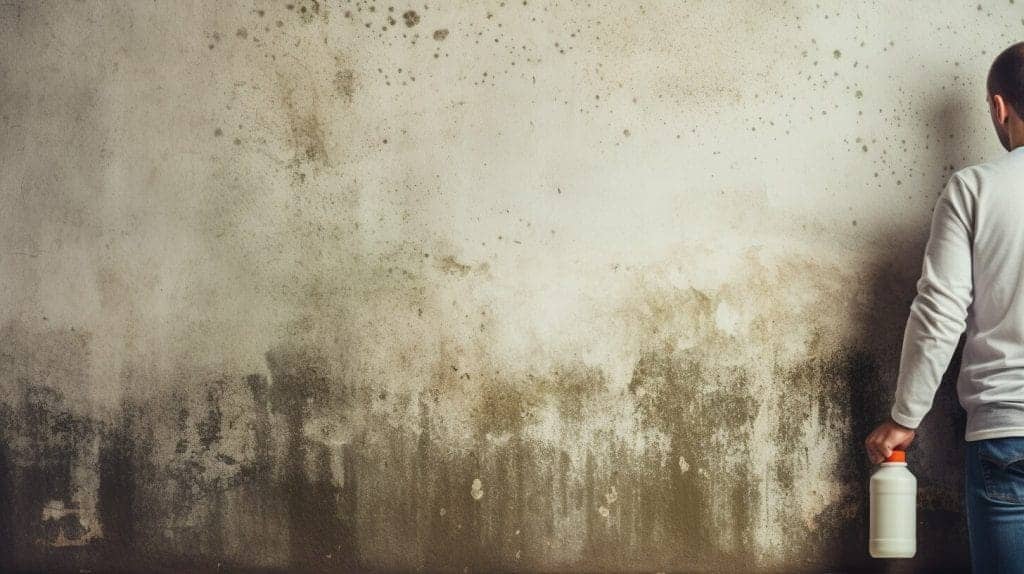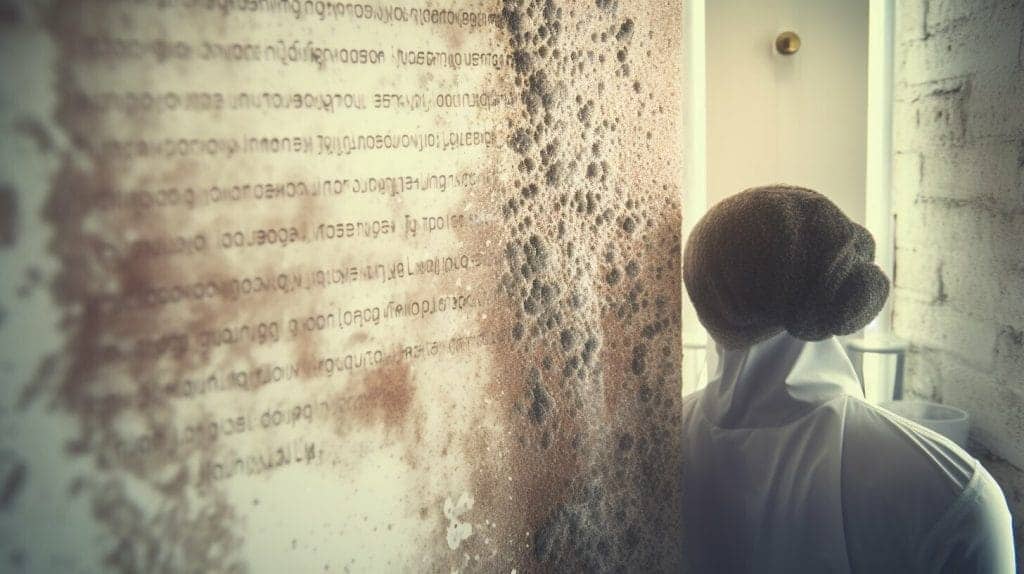Black mold is a type of mold that is often associated with health risks and property damage. It is commonly found in homes and other indoor environments where there is excess moisture. But is all black mold toxic? The answer is not as simple as a yes or no.
While some forms of black mold are not harmful, others can pose serious health risks if left untreated. Toxic black mold, for example, can produce mycotoxins that can cause respiratory problems, neurological symptoms, and even death in rare cases. It is important to note, however, that not all black mold is toxic and not all people are sensitive to its effects.
Proper removal techniques are crucial in preventing the spread of black mold and minimizing health risks. In this article, we will explore what black mold is, the risks associated with exposure, how to identify it, and the different removal methods available. We will also provide tips on how to prevent black mold from growing in your home and what to do if you suspect black mold is present.
What Is Black Mold?
Black mold, also known as Stachybotrys chartarum, is a type of fungus that thrives in moisture-rich environments. It has a distinctive black or dark green appearance and can grow on a variety of surfaces, including drywall, carpeting, and ceiling tiles.
Black mold has gained notoriety due to its potential health risks. Exposure to black mold can cause a range of symptoms, including coughing, sneezing, and skin irritation. In severe cases, it can also lead to respiratory problems and neurological issues.
What Makes Black Mold Toxic?
Black mold produces mycotoxins, which are toxic chemicals that can lead to various health problems in humans and animals. These mycotoxins are released into the air, which can make exposure to black mold particularly dangerous.
In addition, black mold spores can spread quickly throughout a home or building, making it difficult to control and remove.
Where Is Black Mold Commonly Found?
Black mold is commonly found in areas with high humidity and moisture, such as bathrooms, kitchens, and basements. It can also grow in areas that have suffered water damage, such as after a flood or a leaky roof.
If left untreated, black mold can spread rapidly and lead to significant damage to your home or building. It’s important to be proactive in identifying and removing black mold as soon as possible.
The Different Types of Mold
Mold is a type of fungus that thrives in damp, humid environments. There are many different types of mold, each with its unique characteristics and potential health risks.
Common types of mold include:
| Type of Mold | Appearance | Common Locations |
|---|---|---|
| Aspergillus | Green, yellow, or white | Frequently found in homes with water damage or high humidity levels |
| Cladosporium | Olive green or black | Commonly found indoors or outdoors in areas exposed to water damage or high humidity |
| Penicillium | Blue or green | Often found in water damaged materials, including carpet, wallpaper, and insulation |
| Stachybotrys | Black or dark green | Commonly referred to as “black mold,” this type of mold thrives in damp areas with poor ventilation, such as basements and bathrooms. |
While all types of mold can pose health risks, toxic black mold (Stachybotrys) is known for its potential to cause more severe symptoms than other types of mold.
Dangers of Black Mold
Black mold is not only unsightly and unpleasant smelling, but it can also have significant health consequences if left unchecked. The effects of black mold can range from minor irritation to severe allergic reactions and long-term health issues.
Some of the health risks associated with exposure to black mold include:
- Respiratory problems such as coughing and wheezing
- Nasal and sinus congestion
- Skin irritation and rashes
- Eye irritation and redness
- Headaches
- Fatigue
- Severe allergic reactions
- Neurological problems
People with weakened immune systems or pre-existing respiratory conditions such as asthma or allergies are particularly susceptible to the health risks associated with black mold.
In addition to its impact on human health, black mold can also cause damage to your property. It can weaken structural materials and cause unsightly stains and discoloration. If left untreated, black mold can eventually lead to the need for costly repairs.
It is important to take the risks associated with black mold seriously and to take action to remove it as soon as it is identified.
Identifying Black Mold
Identifying black mold in your home can be challenging as it can easily be mistaken for other common molds. However, there are several signs that can help you identify black mold:
- A strong, musty odor
- Black or dark green spots or patches on walls, ceilings, or floors
- Bumpy or pebbled texture on surfaces
- Visible moisture or water damage
- Excessive humidity or condensation
If you suspect that you have black mold in your home, it is important to have it tested to confirm its presence. Testing can be done through a DIY kit or by hiring a professional. It is important to note that DIY kits may not be as accurate as professional testing.
Black Mold in Bathrooms
Bathrooms are common areas for black mold growth due to the moisture from showers and baths. Black mold in bathrooms can appear on walls, ceilings, tiles, and grout. It can also be found in shower curtains, bath mats, and towels.
If you notice signs of black mold in your bathroom, it is important to address it as soon as possible to prevent it from spreading to other areas of your home.
Preventing Black Mold
Prevention is the key when it comes to black mold. Here are some practical ways to prevent black mold growth in your home:
- Control moisture: Keep humidity levels in your home below 60% by using air conditioners and dehumidifiers. Fix any water leaks as soon as possible.
- Ventilate well: Use exhaust fans in bathrooms, kitchens, and laundry rooms to prevent moisture buildup.
- Insulate properly: Make sure your home is well-insulated to prevent condensation from forming on walls and windows.
- Clean regularly: Regularly clean and maintain your home, paying special attention to areas that are prone to moisture buildup.
- Be cautious: Be cautious when using humidifiers, as they can create excess moisture and promote mold growth if not used properly.
DIY Black Mold Removal Methods
If you’re dealing with black mold in your home, you may be tempted to try DIY removal methods. While it’s possible to remove small amounts of mold on your own, it’s important to note that black mold can be highly toxic. DIY removal methods can also be risky if proper safety precautions aren’t taken.
Before attempting to remove black mold yourself, consider the following:
- Wear protective gear, including a respirator mask, gloves, and goggles, to protect yourself from mold spores and cleaning chemicals.
- Make sure the affected area is well-ventilated to prevent mold spores from spreading to other areas of your home.
- If you’re using cleaning products, make sure they are specifically designed for black mold removal.
- Follow the instructions on the cleaning products carefully and never mix different cleaning products together as this can create toxic fumes.
- Be aware that DIY removal methods may not completely eliminate the mold and there is a risk of it returning, especially if the underlying moisture problem is not addressed.
If you decide to proceed with DIY black mold removal, there are a few methods you can try:
| Method | Description |
|---|---|
| Vinegar | Mix equal parts white vinegar and water. Spray the solution onto the affected area and let it sit for at least an hour before wiping away with a damp cloth. |
| Baking Soda | Mix 1/4 tablespoon of baking soda with a cup of water. Spray the solution onto the mold and scrub with a brush before wiping away with a damp cloth. |
| Bleach | Mix one cup of bleach with a gallon of water. Use a spray bottle to apply the solution to the mold, let it sit for at least 15 minutes before wiping away with a damp cloth. |
Keep in mind that these methods may not be effective for larger or more severe cases of black mold. If you’re unsure about the extent of your mold problem or are concerned about your health, it’s best to consult a professional.
When to Call in a Professional
While some minor mold problems can be dealt with using DIY methods, it is important to know when it’s time to call in a professional. If the mold is covering an area of more than 10 square feet, it’s best to bring in a professional mold removal specialist. Experts in the field have the necessary skills, equipment and protective gear to deal with black mold removal safely and effectively.
If you or someone in your household is experiencing symptoms such as respiratory problems, skin irritation or allergic reactions, it’s important to consult a doctor and call in a professional right away. Also, if you are unsure about the type of mold you are dealing with, it’s best to have it tested by a professional mold inspector to determine the correct course of action.
Additionally, if removing mold involves any type of demolition or construction (such as tearing out drywall or replacing insulation), it is best to hire a professional contractor who can safely handle the job and ensure that all traces of mold have been removed.
Attempting to remove black mold on your own can be dangerous, as DIY methods can often do more harm than good. When in doubt, it’s always best to seek professional help to ensure that the job is done safely and effectively.
Black Mold Removal Costs
Black mold removal costs can vary widely depending on the extent of the damage and the size of the affected area. The average cost of black mold removal is around $500 to $4,000. However, the cost can be as high as $10,000 for severe cases.
Factors that can affect the cost of black mold removal include:
- The size of the affected area:
- The severity of the damage:
- The type of mold:
If the affected area is larger, it will require more time and work to remove the mold. This can increase the cost of the removal process.
The harder it is to remove the mold, the higher the cost of the removal process. If the mold has spread to other areas or has caused significant damage, it can also increase the cost of removal.
Some types of mold are more difficult to remove and require specialized treatment. This can affect the cost of the removal process.
It is important to note that insurance may cover some or all of the cost of black mold removal, depending on the policy and the cause of the mold growth. It is important to check with your insurance provider to understand your coverage.
Common Myths About Black Mold
Black mold is a common household issue and with it comes numerous myths. Here are some of the most common myths associated with black mold that you should know:
Myth: All Black Mold is Toxic
Not all black mold is toxic. While some types of black mold can produce toxins, others may not produce any harmful substances. It is important to identify the type of mold present in your home before taking any action.
Myth: Bleach Can Effectively Remove Black Mold
Bleach is a common household cleaner and is often used to remove mold. However, bleach is not effective in removing black mold. It can even make the problem worse by releasing spores into the air and spreading the mold to other areas.
Myth: Small Amounts of Black Mold Are Not Harmful
No amount of black mold is safe. Even small amounts can potentially cause health problems, especially for individuals with allergies or weakened immune systems.
Myth: You Can Remove Black Mold Yourself
While it is tempting to attempt to remove black mold yourself, it is not recommended. Black mold removal can be extremely dangerous and can lead to serious health problems if not done correctly. It is always best to hire a professional to remove black mold from your home to ensure safe and proper removal.
Myth: Once Black Mold is Removed, It Will Not Return
Removing black mold does not guarantee that it will not return. Mold can grow in unseen places, such as behind walls or under floors, and can return if the underlying cause of the mold growth is not addressed.
Myth: Black Mold is Only Found in Damp Areas
Black mold can grow in any area of your home, regardless of dampness or humidity levels. It can even grow in areas that are not typically associated with mold, such as air ducts or on household surfaces.
Black Mold Removal Products
Removing black mold requires proper tools and products. There are different types of cleaning agents and solutions available in the market that can help in removing black mold. But, it is important to note that not all products are suitable for every situation. Some products can be harmful to your health and may even worsen the mold situation. Before using any product, it is essential to read and understand the instructions carefully, and ensure that the product is appropriate for the type of mold you are dealing with.
Bleach is a common household product used for black mold removal. Though it can be effective in killing mold on non-porous surfaces, it is not suitable for porous surfaces and can also be harmful to your health if not used properly. Other cleaning products such as ammonia and hydrogen peroxide are also effective in killing mold, but they can also be hazardous to your health if not used carefully.
There are also natural products available in the market that can be effective in removing black mold. Vinegar, for example, is a natural cleaning agent that can be used to remove mold on non-porous surfaces. Tea tree oil is another natural product that can be useful in removing mold. It has anti-fungal and anti-bacterial properties that can kill black mold and prevent it from coming back.
When choosing black mold removal products, it is important to consider the safety of the product, its effectiveness, and your personal budget. It is advisable to consult a professional if you are unsure of what product to use, or if the mold situation is severe.
After Black Mold Removal
Once black mold has been properly removed from your home or property, it is important to take steps to prevent future growth. Here are some tips on what to do after black mold removal:
- Clean and disinfect: After the mold has been removed, clean and disinfect all affected areas. Use a solution of water and bleach (one cup of bleach per gallon of water) or a commercial mold-killing product. Be sure to wear gloves and a mask while cleaning.
- Maintain proper ventilation: Poor ventilation can lead to high humidity levels, which can promote the growth of mold. Open windows and doors to let in fresh air and use fans or dehumidifiers if necessary.
- Fix leaks: Any leaks or moisture problems that contributed to the mold growth should be addressed. Repair any damaged pipes or roofs, and seal any cracks in windows or walls.
- Monitor for future growth: Keep an eye out for any signs of future mold growth, such as musty odors or water stains. If you notice any early signs of mold growth, take action immediately.
By following these tips, you can help prevent future mold growth and maintain a healthy living environment.
Black Mold and Insurance
Dealing with black mold in your home can be a costly and overwhelming experience. In some cases, you may be wondering if insurance will cover the expenses associated with black mold removal. Here is what you need to know.
| Homeowner’s Insurance | Most homeowner’s insurance policies do not cover black mold removal, especially if it is a result of long-term neglect or maintenance issues. However, if the mold growth is due to a sudden and unexpected event, such as a burst pipe, your insurance may cover the cost of cleanup. It is important to carefully review your policy to understand your coverage and limitations. |
|---|---|
| Flood Insurance | If your black mold problem is caused by flooding, your homeowner’s insurance policy will not cover the costs. Instead, you would need to have a separate flood insurance policy to cover the damage and cleanup expenses. |
| Additional Coverage | Some insurance companies offer additional coverage specifically for mold remediation. This coverage typically includes inspections, testing, and removal services. However, this coverage can be expensive and may require a separate deductible. |
If you discover black mold in your home, it is important to contact your insurance company as soon as possible to understand your coverage options. It is also important to work with a professional mold remediation company to ensure that the mold is safely and properly removed.
FAQ
Q: Is all black mold toxic?
A: No, not all black mold is toxic. However, it is important to identify the type of black mold present to determine the potential health risks.
Q: What are the health risks associated with black mold?
A: Exposure to black mold can cause a range of health issues, including respiratory problems, headaches, and allergic reactions. In severe cases, exposure to toxic black mold can cause neurological problems and even death.
Q: Where is black mold commonly found in homes?
A: Black mold is commonly found in areas with high humidity, such as bathrooms, kitchens, and basements. It can also grow on materials like carpet, drywall, and wood.
Q: How can I prevent black mold growth in my home?
A: To prevent black mold growth, it’s important to control moisture levels in your home. Use proper ventilation, fix any leaks, and keep humidity levels below 60%.
Q: Can I remove black mold myself?
A: It is possible to remove black mold yourself, but it can be risky. It’s important to wear protective gear and follow proper removal methods to avoid spreading the mold or exposing yourself to harmful toxins. For severe cases or if you are unsure about the extent of the mold growth, it’s best to call in a professional.
Q: Can I still live in my home during black mold removal?
A: It depends on the extent of the mold growth and the removal method being used. In some cases, it may be safe to stay in the home. However, for severe cases, it may be necessary to temporarily relocate until the mold is completely removed.
Q: Does insurance cover black mold removal?
A: It depends on your insurance policy. Some policies may cover the cost of black mold removal if it is caused by a covered peril, such as water damage. Check with your insurance provider to find out what is covered under your policy.
Q: How can I ensure black mold doesn’t grow back after removal?
A: To prevent black mold from growing back, it’s important to fix any sources of moisture and keep your home properly ventilated. Regularly check for leaks and address them immediately. Clean and dry any areas affected by water damage within 24 to 48 hours.
Dr. Francisco Contreras, MD is a renowned integrative medical physician with over 20 years of dedicated experience in the field of integrative medicine. As the Medical Director of the Oasis of Hope Hospital in Tijuana, Mexico, he has pioneered innovative treatments and integrative approaches that have been recognized globally for the treatment of cancer, Lyme Disease, Mold Toxicity, and chronic disease using alternative treatment modalities. Dr. Contreras holds a medical degree from the Autonomous University of Mexico in Toluca, and speciality in surgical oncology from the University of Vienna in Austria.
Under his visionary leadership, the Oasis of Hope Hospital has emerged as a leading institution, renowned for its innovative treatments and patient-centric approach for treating cancer, Lyme Disease, Mold Toxicity, Long-Haul COVID, and chronic disease. The hospital, under Dr. Contreras's guidance, has successfully treated thousands of patients, many of whom traveled from different parts of the world, seeking the unique and compassionate care the institution offers.
Dr. Contreras has contributed to numerous research papers, articles, and medical journals, solidifying his expertise in the realm of integrative medicine. His commitment to patient care and evidence-based treatments has earned him a reputation for trustworthiness and excellence. Dr. Contreras is frequently invited to speak at international conferences and has been featured on CNN, WMAR2 News, KGUN9 News, Tyent USA, and various others for his groundbreaking work. His dedication to the medical community and his patients is unwavering, making him a leading authority in the field.
Contreras has authored and co-authored several books concerning integrative therapy, cancer, Lyme Disease and heart disease prevention and chronic illness, including "The Art Science of Undermining Cancer", "The Art & Science of Undermining Cancer: Strategies to Slow, Control, Reverse", "Look Younger, Live Longer: 10 Steps to Reverse Aging and Live a Vibrant Life", "The Coming Cancer Cure Your Guide to effective alternative, conventional and integrative therapies", "Hope Medicine & Healing", "Health in the 21st Century: Will Doctors Survive?", "Healthy Heart: An alternative guide to a healthy heart", “The Hope of Living Cancer Free”, “Hope Of Living Long And Well: 10 Steps to look younger, feel better, live longer” “Fighting Cancer 20 Different Ways”, "50 Critical Cancer Answers: Your Personal Battle Plan for Beating Cancer", "To Beat . . . Or Not to Beat?", and “Dismantling Cancer.”









